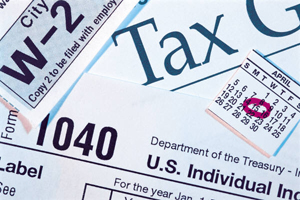Seasons Greetings and Tax Season

Season’s Greetings and Happy Holidays!
You know what that means –
Tax season is just around the corner!
the 2013 tax filing season could be a “real disaster,” IRS Commissioner Douglas Shulman said Thursday, if Congress doesn’t make key tax decisions before Jan. 1.
“You could have a real disaster in the filing season where there is total confusion,” Shulman said during a speech at the National Press Club.
Members of Congress strongly disagree on tax policy and most have agreed to put off any substantive changes until after Nov. 6 elections. That doesn’t leave much time to make decisions and revamp IRS procedures before the traditional Jan. 1 beginning of tax season.

Some strategic planning done before year’s end can amount to significant savings for some. I often meet with clients during the last few months of the year with an eye toward projecting their tax liability and developing a plan to reduce their tax liability.
A self-employed individual can expect to pay approximately forty-five percent tax on income that reaches into a higher tax bracket. Income taxed in a lower tax bracket is taxed at approximately thirty-five percent. The key to managing a tax liability is to know when you have income that goes into a higher tax bracket.
Single taxpayers pay a higher (25% versus 15%) rate of tax when taxable income exceeds $34,500.
You want to reduce taxable income thereby lowering the tax liability. Additional business expenses will reduce all three federal, state and self-employment tax liabilities. Taxpayers can also purchase equipment or vehicles before the end of the year that can net huge tax savings. For example, a$2,000 computer purchase will end up costing only $1,100 when the tax savings is factored into the purchase. Learn what deductions you can or should take.
There are also tax deductions, retirement funding for example, that we utilize that will reduce the federal tax but not the self-employment tax. Planning and projecting a tax liability is an integral segment of the tax preparation process. If you are a small business entrpreneur that has a tax bill of more than $500, you should be paying quarterly estimated taxes. You could be hit with IRS penalties which can severely impact your business’s cash flow.
In addition to tax deductions there are some tax credits that have been reauthorized and some credits set to expire have been extended for two years.TALK TO SOMEONE WHO KNOWS HOW TO HELP YOU!
Tax credits are beneficial because they directly reduce the tax while a tax deduction reduces the amount of money being taxed. Once again I particularly like the energy credits, particularly the solar credit, and the education credits. Credits for windows and doors still exist, but are capped at 10% up to $500 (windows are capped at $200).
The modified education credit is now referred to as the American Opportunity Tax Credit. This credit has been expanded to include expenses for course books, supplies, and equipment. The credit is equal to 100% of the first $2,000 spent and twenty-five percent of the next $2,000 per student each year. Therefore, the full credit amount of $2,500 may be available to a taxpayer who pays $4,000 or more in qualifying expenses.
Remember that I am here throughout the year to answer any questions you might have, and I am looking forward to helping you maximize those tax deductions and credits in the upcoming tax season! MENTION THIS ARTICLE WHEN CALLING OUR OFFICE.
Happy Holidays!
Linu Thomas
Provident Light Advisors






































